
{ESSAY} A Tale of Two Sixties
Essays, Literature‘If you remember the sixties, you weren’t really there’. Attributed to Grace Slick, amongst others.
In 1967, at the age of eighteen, I left my Yorkshire, working class, grammar school roots, to become an art student; moving about as far south as you could get without actually drowning. But I did nearly drown; in the supra tectonic backwash of a social revolution.
To northerners, the south was glitzy, show bizzy, and full of fast talking spivs with no morals. We, on the other hand, were the solid, one-up-one-down, honest-to-goodness working classes who did the actual graft. Proper work in noisome factories, mines and mills; not the fluffy, vacuous nonsense southerners did. We sweated and broke fingernails, wiped our noses on our sleeves, and had strip washes standing in bowls in our icy kitchens.
Then, in covert acts of subversion, our monochrome TVs began giving us glimpses of another life. Without asking, they showed us the elegant and aspirational likes of Jean Shrimpton, Celia Hammond –– and then Twiggy, at whom we gawped in disbelief.
‘Needs a good meal, does yon,’
‘That’s a lad in a frock!’

We held our collective adolescent breath when we saw The Beatles on Granada TV. Mop headed, gawky, fizzy pop aimed at children. Innocent as a first kiss. But we knew, those of us in our teens, that there was a fundamental earthiness here. That it was not at all innocent. Our guts knew this from our sweaty palmed, cod-gaping, goggle-eyed sucking of those grainy images into our forever place. Never to forget. And we knew because our parents tutted and disparaged over their newspapers and knitting. Whatever this was, adults were ineligible because their windows of cultural plasticity had closed. We were primed; but like raw metal, cupped and poised on the lip of the furnace, we were not yet the fiery liquid of technicolour dreams, ready to slip, crackling, into the new mould.
In the south, the second wave of the sixties revolution was already taking shape. These sixties grew with The Beatles through the bubblegum of ‘Love Me Do’ to the mystical Magi of ‘Sergeant Pepper’. Like Huxley’s ‘Doors of Perception,’ which opened only to believers and fellow hallucinators, the new wave sixties popped out through dazzling portals, into selective pockets of bohemian readiness. Wherever they opened, streaming ribbons of blazing colours leaped out like posterised pixies; driving two dismal decades back into the cracked basin, outside toilet, pea soup gloom of another age. For the south, the shift was a graduation. A series of barely perceptible, successive approximations along a social dimension of liberalism. For the north, it was a step change. A jolt. Lacking today’s globalised communication systems, the north was left standing at its smog-enveloped bus stop, while the south rode by on white swans and rainbow unicorns, singing songs about narcotics.
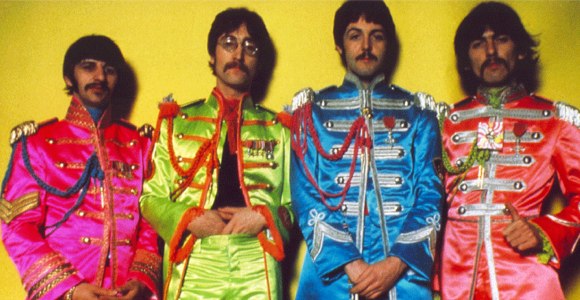
We had left home at midnight, my Dad and me, in the scrubbed up, rubbed down, tappet-tinkered family Ford. We took the A1; a tentative thread of rumbling tarmac, stitched around the button holes of transport cafes. Our wipers going whoof whoof whoof, side to side on the split windscreen, and heaving glittering rain backwards into the dark. I had an interview at Brighton College of Art, a million miles away from Bradford.
These days, the trip is a droning, air conditioned trundle along a bland runway, with comfy satnav commentary. Dots of cosy Costas and M&S deli’s accommodate herds of anonymous itinerants stoking up on caffeine. They’ll be there in the blink of an iPod; wherever ‘there’ is. In 1967, it was a full-on expedition with respite available only from the dingy transport caffs that festered alongside pot-holed lay-bys. Whenever we stopped at one of these; bleary truckers, slouching against smoke-yellowed walls, eyed me up and down with overtly proprietorial interest. Goods for sale, that look seemed to say. Then they nodded at my Dad in tacit approval. All men together, understanding the game. The prospect of a quick leg-over in the cab, or behind the toilets, firing lascivious glints in road deadened eyes. Sharing was always a possibility. Their misconceptions were quickly corrected.
‘She’s my daughter,’ my Dad growled towards anyone who looked at us.
‘Aye lad, if you say so,’ they letched back; restoring soggy-ended fags to sweaty mouths rimmed with egg yolk and fried breadcrumbs. I felt like Rita Tushingham in ‘A Taste of Honey’. Watchful, pinch-faced. Silent in this man’s world, and acutely aware of my status here as an object of trade. Back in the car and moused into the front passenger seat, I was a child again. But a different sort of child from when we had left. Becoming a marketable commodity does that to you.
By sunrise, squint-eyed and legs dancing with cramp, we were parked up on the seafront. No meters or yellow lines; just us, a raucous, appraising seagull, and the bright, brilliant, beautiful Brighton sea. Jade railings, flags, sparkling water lifting higher than I had ever seen and crashing down onto pebbles that lay in salty, glistening tiers under the promenade.
‘Get your face washed, love, to be ready. I’ll get my head down for a bit’.
I checked myself over; purple sweater, red cord skirt (‘A’ line and short but not yet mini), purple sling backs with kitten heels. Arty enough, for a northerner. But I didn’t know yet how different this world was. That it made its own rules. Or that here was one of the portals through which the new sixties had burst; paintballing the town with lights that danced through exotic oils in hot projectors, and in trippers’ eyes, made deeper and darker than lost souls by LSD and cannabis.
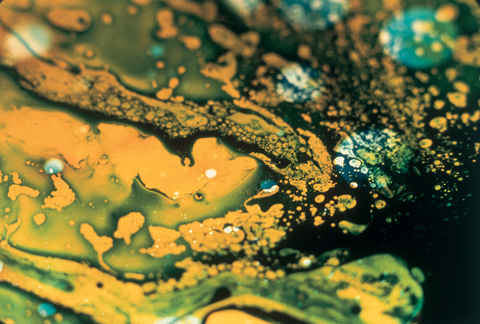
After the interview, I spent another few months with the old sixties; an artist-in-waiting, toying with ‘A’ Levels. Token artefacts occasionally broke through the force field of geographical insularity: ‘Magical Mystery Tour’ in colour on someone’s TV; an all-night skate-in with the stage scenery I’d painted in the rink’s boiler room, assisted by a couple of members of our Sixth Form art group. One of these was a young man with whom I was on chaste snogging terms, and whose parents I had been taken to meet. This was a ritual tantamount to engagement, back then. Although, as his Dad was a vicar, and I was en route to atheism via indicating to our Methodist minister where I believed he could most usefully shove his anti-youth sermon, the prospects were probably not that good. Still, this romantic interlude effectively ensured that my conservative interpretation of the sixties – all angles, slanting haircuts, and geometric clothing, but essentially nice – took precedence over any creeping influences from the likes of The Byrds or Jimi Hendrix. I had no trouble maintaining an image compatible with a vicar’s prospective daughter-in-law so that, on the day I was deposited in Brighton with my suitcase, I looked more like a refugee from The Famous Five than a student at one of the UKs most innovative art colleges.
It didn’t last.
By Christmas, the sensible skirt, sensible shoes and sensible sweater had lost out to thigh high black plastic boots, a puce cape, large floppy hat and a skirt identified by my Dad, by means of his Blokes’ Lexicon of Descriptors, as a pelmet. Goodbye ‘Son of a Preacher Man’; hello ‘Voodoo Chile’.
‘Is she going out like that?’
‘It looks like it.’
‘Well, talk to her!’
‘I did. It’s your turn.’ Mum had retreated to the kitchen to anchor herself in familiar rituals. Dad had watched, his jaw line white and twitching, as I disappeared to explode Brighton psychedelia into the Halfway House pub where women still drank from ladies’ glasses and never bought a round. I had set out to shock, but shocking was easy as teenagers had not yet been invented, and there was nowhere to be different.
Bradford never really got it. The fashions arrived, sure enough; drifting crinkley cheese cloth over a generation, but they bought it from C&A. Brighton’s iteration of the sixties surged ahead; endlessly loving itself, and introspecting on its own uniqueness. We had shifted from Twiggy to charity shop chic; the Beatles to Leonard Cohen and Jacques Brehl – music by which to drop acid and watch endless jewelled beetles weave mystical tapestries over pebble dashed walls. A young man killed himself trying to fly from his roof; and the Pill gave us the freedom to say yes without telling us we could also say no. ‘Je t’aime…moi non plus’ underwrote our erotic, ignorant, knowingness and let us believe we were starlight; while consequences stacked up like body bags shipped back from Vietnam to national disregard. Dressed in second hand lace, transparent Biba silk, and wispy cotton tie dyes; we echoed Woodstock, pre-empted Glastonbury, and sold our innocence to the New Age. We were Aquarians.
References
Delaney, S. (1961) ‘A Taste of Honey’. Dir. Tony Richardson. Woodall Film Productions.
The Beatles (1962) ‘Love Me Do’. John Lennon, Paul McCartney. Prod. George Martin. Audio recording on vinyl, UK. Parlophone.
The Beatles (1967) ‘Sergeant Pepper’s Lonely Hearts Club Band’. Prod. George Martin. Audio recording on vinyl, UK. Parlophone.
Jane Birkin & Serge Gainsbourg (1969) ‘J’taime – moi non plus’. Serge Gainsbourg. Prod. Jack Baverstock. Audio recording on vinyl, UK. Fontana.
Blyton, E. ’The Famous Five’. Series first published 1942.
The Jimi Hendrix Experience (1968) ‘Voodoo Chile’. Jimi Hendrix Prod. Jimi Hendrix. In ‘Electric Ladyland’ . Audio recording on vinyl, UK. Reprise.
Huxley, A. (1954). ‘Doors of Perception’. Chatto & Windus.
‘Magical Mystery Tour’ (1967).Dir. Bernard Knowles. Prod. John Lennon, Paul McCartney, George Harrison, Ringo Starr, Gavrik Losey, Dennis O’Dell. New Line Cinema.
Dusty Springfield (1968) ‘Son of a Preacher Man’. John Hurley, Ronnie Wilkins. Prod. Jerry Wexler, Tom Dowd, Arif Mardin. Audio recording on vinyl, UK. Atlantic Records.
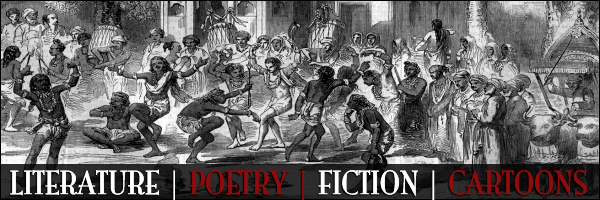






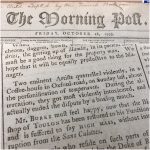
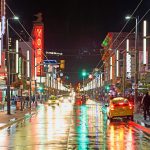




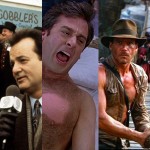
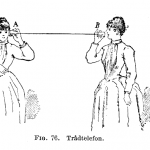


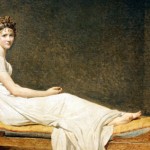

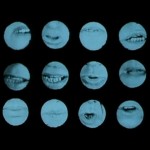




[…] original article: ESSAY A Tale of Two Sixties Posted on October 11, 2011 by Matt Wilson. This entry was posted in General. Bookmark the […]